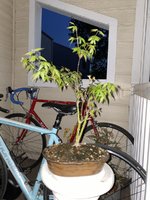southernleaf
Seedling
Hi everyone, I have a 6 year old maple bonsai I acquired 2 years ago. I am in Austin, TX and I noticed this wound forming about a week ago. I did a heavy pruning in September that involved removing one main branch. I’m attaching before and after photos with a couple close ups of the potentially infected area. This photos were taken between September 2020 and Feb 2021. You can see a hole opening up above where a main branch was cut, which is my focus area in this thread. The weird looking grey color is the wound paste that I applied after the September pruning.
My questions are
1) is this an infection and if so, what am I dealing with?
2) what is the best remed?
3) how can I ensure that this doesn’t happen again?
PS I am fairly new to bonsai and this is one of two trees I have so this is definitely a learning opportunity for me. Thanks in advance for any thoughts or advice!
My questions are
1) is this an infection and if so, what am I dealing with?
2) what is the best remed?
3) how can I ensure that this doesn’t happen again?
PS I am fairly new to bonsai and this is one of two trees I have so this is definitely a learning opportunity for me. Thanks in advance for any thoughts or advice!
Attachments
-
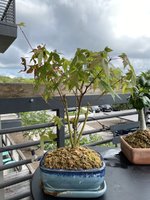 ACA66498-6ABC-4F19-9444-CBA7327481CB.jpeg216 KB · Views: 144
ACA66498-6ABC-4F19-9444-CBA7327481CB.jpeg216 KB · Views: 144 -
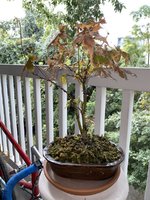 3A41FD6F-BD84-454A-A04E-058AC442578B.jpeg260.7 KB · Views: 110
3A41FD6F-BD84-454A-A04E-058AC442578B.jpeg260.7 KB · Views: 110 -
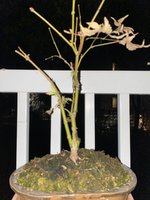 AAA86425-4491-43F8-A191-2944FF3A0E7D.jpeg158.5 KB · Views: 102
AAA86425-4491-43F8-A191-2944FF3A0E7D.jpeg158.5 KB · Views: 102 -
 521DE45B-1598-42CA-855A-CB35A35BC71E.jpeg221.4 KB · Views: 98
521DE45B-1598-42CA-855A-CB35A35BC71E.jpeg221.4 KB · Views: 98 -
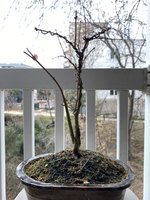 5A54DDA9-0602-4C4C-91EC-C7F15CAF41F9.jpeg197.8 KB · Views: 100
5A54DDA9-0602-4C4C-91EC-C7F15CAF41F9.jpeg197.8 KB · Views: 100 -
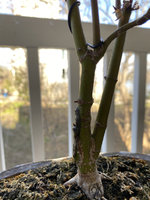 3757AD6F-D196-4A53-89C2-A5332647EB3E.jpeg154 KB · Views: 105
3757AD6F-D196-4A53-89C2-A5332647EB3E.jpeg154 KB · Views: 105 -
 889F422F-A8D9-4505-9558-368F50E391B5.jpeg172.5 KB · Views: 121
889F422F-A8D9-4505-9558-368F50E391B5.jpeg172.5 KB · Views: 121 -
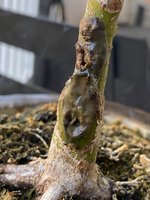 2A86FFBB-674B-4D8E-B35C-8EB180171A97.jpeg164.6 KB · Views: 150
2A86FFBB-674B-4D8E-B35C-8EB180171A97.jpeg164.6 KB · Views: 150

